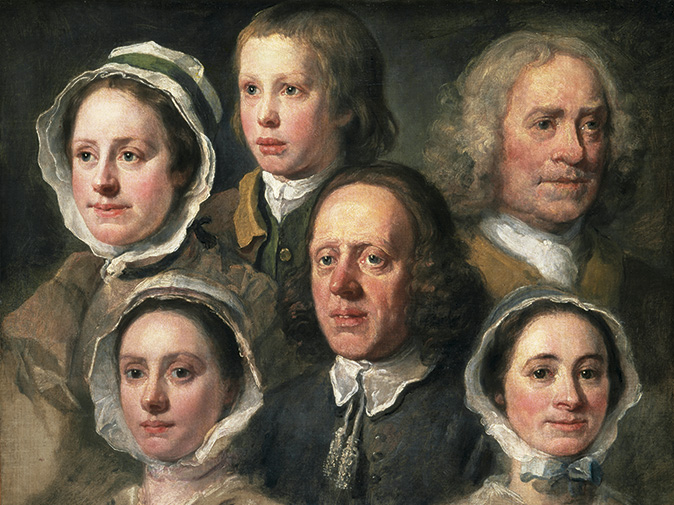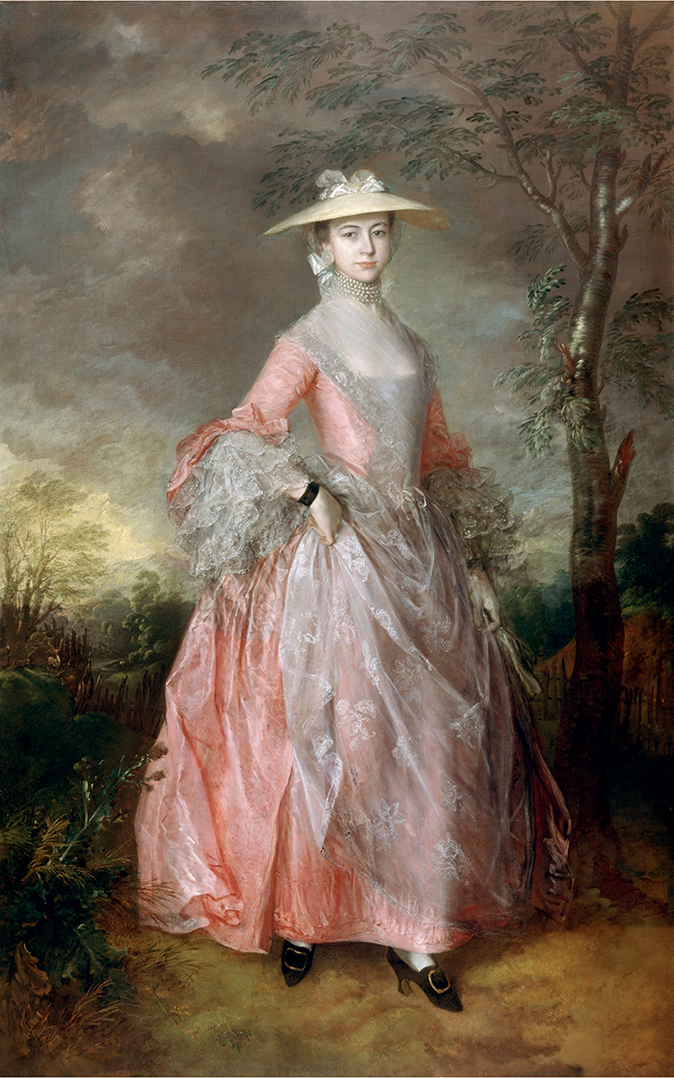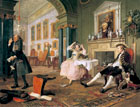My favourite painting: Jenny Uglow
'This is a tribute to the dignity and inner lives of “ordinary” people, profound and tender at once.'


Heads of Six of Hogarth’s Servants, 1750–55, by William Hogarth (1697– 1764), 25in by 29½in, Tate Collection
Jenny Uglow says: I like this painting because of its great humanity. Hogarth was a generous employer and his servants included old Ben Ives—perhaps the man on the top right—and a Mrs Chappel, who stayed with him for many years. Here, they have no names, yet their faces, formally arranged against the plain background, are full of personality: the two maids in front, flanking the footman and the young houseboy, who looks rather awed by sitting for his portrait. This is a tribute to the dignity and inner lives of “ordinary” people, profound and tender at once.
Jenny Uglow is a writer. Her most recent book, In These Times: Living in Britain through Napoleon’s Wars, 1793–1815, was published in 2014 and she is now working on a biography of Edward Lear
John McEwen comments on Hogarth’s Servants: Hogarth was the first internationally famous English artist, so why has he not been chosen for this page before? Especially as he personifies such perceived English virtues as humour, patriotism, libertarianism, respect for underdogs, distrust of snobs, intellectual or otherwise, conviviality, love of the theatre (the first to paint actors acting) and animals.
Can it be the curse of Kenneth Clark’s dismissal in the TV series Civilisation? ‘Plenty of animal spirits, but not what we could, by any stretch, call civilisation.’ To make the contemporary point, Clark contrasted Hogarth’s satire A Midnight Modern Conversation, an all-male drinking session, with the Frenchman de Troy’s picture of a group, crucially including five women, reading Molière.
Hogarth’s adulthood coincided with a shift in power from the Court and aristocracy to parliament and the City of London. his childhood in Smithfield, then still the site of the medieval St Bartholomew’s Fair, placed him at London’s seething centre. When his father, a Latin scholar and teacher, was imprisoned for debt like that of Dickens, the boy had to ‘shift’ for himself.
He discovered a new genre in ‘modern moral subjects’, which he marketed as prints, liberating artists by gaining copyright through lobbying for the 1735 Engraver’s Act. By his forties, he was England’s most successful and influential artist, founder of the artists’ co-operative that anticipated the Royal Academy.
Sign up for the Country Life Newsletter
Exquisite houses, the beauty of Nature, and how to get the most from your life, straight to your inbox.
The picture of his servants—maids and footman (front); housekeeper, page, butler (back)—may have been a sampler to show potential portrait clients. his virtuosity and virtues are equally declared; his sitters may be ‘servants’, but their portraits innovatively honour individuality. Clark might have noted the number of women.

My favourite painting: Norman Rosenthal
'Countess Howe became the woman of my dreams, and I would lie awake at night dreaming of unseen petticoats and

Hogarth at TATE Britain
Huon Mallalieu visits Tate Britain's new Hogarth exhibition, and is impressed by the first major show of this great English
Country Life is unlike any other magazine: the only glossy weekly on the newsstand and the only magazine that has been guest-edited by HRH The King not once, but twice. It is a celebration of modern rural life and all its diverse joys and pleasures — that was first published in Queen Victoria's Diamond Jubilee year. Our eclectic mixture of witty and informative content — from the most up-to-date property news and commentary and a coveted glimpse inside some of the UK's best houses and gardens, to gardening, the arts and interior design, written by experts in their field — still cannot be found in print or online, anywhere else.
-
 The Business Class product that spawned a generation of knock-offs: What it’s like to fly in Qatar Airways’ Qsuite cabin
The Business Class product that spawned a generation of knock-offs: What it’s like to fly in Qatar Airways’ Qsuite cabinQatar Airways’ Qsuite cabin has been setting the standard for Business Class travel since it was introduced in 2017.
By Rosie Paterson
-
 Six of the best Clematis montanas that every garden needs
Six of the best Clematis montanas that every garden needsClematis montana is easy to grow and look after, and is considered by some to be 'the most graceful and floriferous of all'.
By Charles Quest-Ritson
-
 'As a child I wanted to snuggle up with the dogs and be part of it': Alexia Robinson chooses her favourite painting
'As a child I wanted to snuggle up with the dogs and be part of it': Alexia Robinson chooses her favourite paintingAlexia Robinson, founder of Love British Food, chooses an Edwin Landseer classic.
By Charlotte Mullins
-
 The Pre-Raphaelite painter who swapped 'willowy, nubile women' for stained glass — and created some of the best examples in Britain
The Pre-Raphaelite painter who swapped 'willowy, nubile women' for stained glass — and created some of the best examples in BritainThe painter Edward Burne-Jones turned from paint to glass for much of his career. James Hughes, director of the Victorian Society, chooses a glass masterpiece by Burne-Jones as his favourite 'painting'.
By Charlotte Mullins
-
 'I can’t look away. I’m captivated': The painter who takes years over each portrait, with the only guarantee being that it won't look like the subject
'I can’t look away. I’m captivated': The painter who takes years over each portrait, with the only guarantee being that it won't look like the subjectFor Country Life's My Favourite Painting slot, the writer Emily Howes chooses a work by a daring and challenging artist: Frank Auerbach.
By Toby Keel
-
 My Favourite Painting: Rob Houchen
My Favourite Painting: Rob HouchenThe actor Rob Houchen chooses a bold and challenging Egon Schiele work.
By Charlotte Mullins
-
 My Favourite Painting: Jeremy Clarkson
My Favourite Painting: Jeremy Clarkson'That's why this is my favourite painting. Because it invites you to imagine'
By Charlotte Mullins
-
 The chair of the National Gallery names his favourite from among the 2,300 masterpieces — and it will come as a bit of a shock
The chair of the National Gallery names his favourite from among the 2,300 masterpieces — and it will come as a bit of a shockAs the National Gallery turns 200, the chair of its board of trustees, John Booth, chooses his favourite painting.
By Toby Keel
-
 'A wonderful reminder of what the countryside could and should be': The 200-year-old watercolour of a world fast disappearing
'A wonderful reminder of what the countryside could and should be': The 200-year-old watercolour of a world fast disappearingChristopher Price of the Rare Breed Survival Trust on the bucolic beauty of The Magic Apple Tree by Samuel Palmer, which he nominates as his favourite painting.
By Charlotte Mullins
-
 My favourite painting: Andrew Graham-Dixon
My favourite painting: Andrew Graham-Dixon'Lesson Number One: it’s the pictures that baffle and tantalise you that stay in the mind forever .'
By Country Life